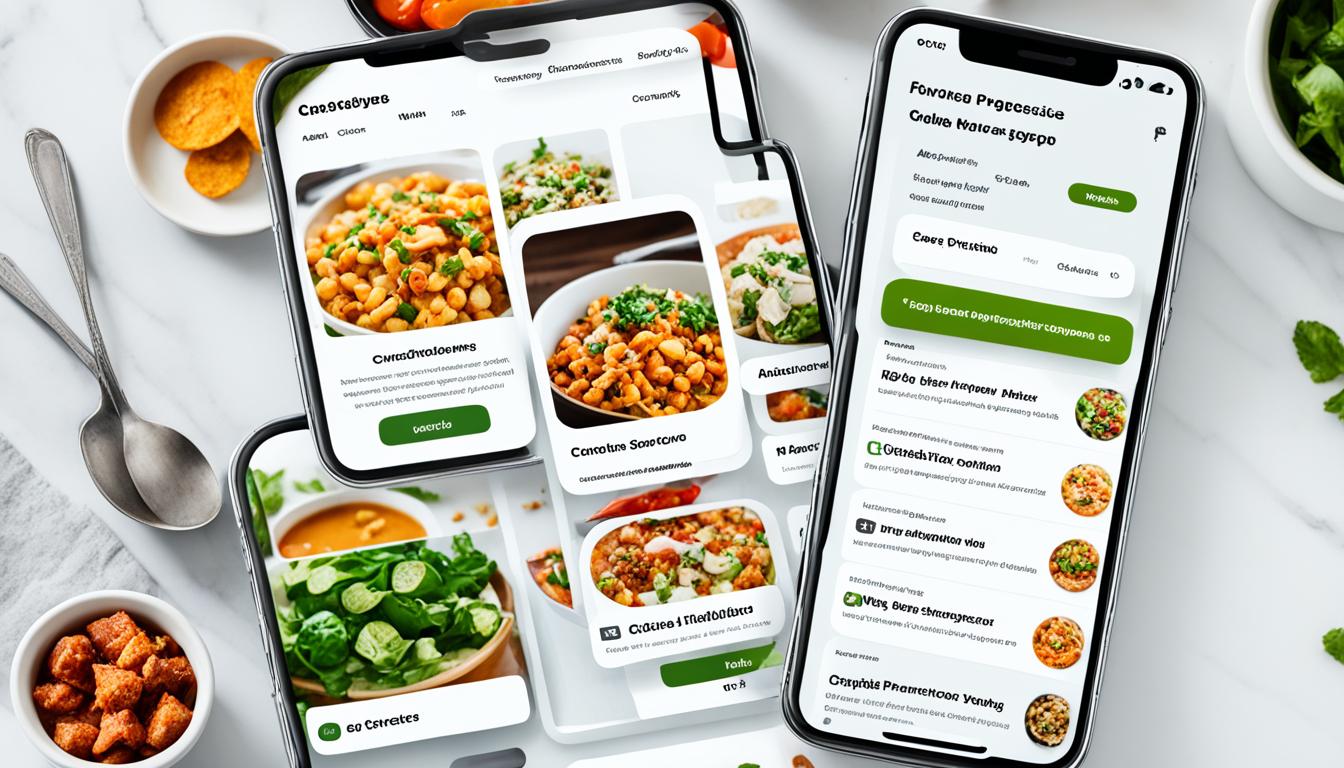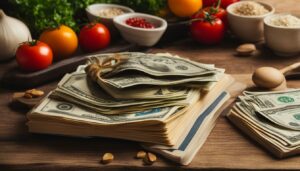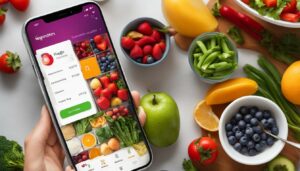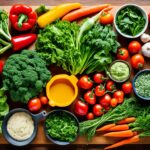Are you a food enthusiast looking to turn your passion for cooking into a profitable venture? Building a recipe app is a great way to monetize your culinary expertise and provide a valuable resource for fellow foodies. Recipe apps offer convenience, personalized experiences, and a wide range of features to enhance the cooking journey. In this article, we will explore the various methods of monetizing recipe apps, the potential revenue generation, and the financial strategies that can help you maximize your income.
Contents
- 1 Recipe App Ideas
- 2 User Flow & Core Features of a Recipe App
- 3 Monetization Strategies for Recipe Apps
- 4 How to Build a Recipe App: Cost & Development Considerations
- 5 The Earning Potential of Food Blogging
- 6 12 Proven Ways to Monetize a Food Blog
- 7 Growing Your Food Blog Audience
- 8 Leveraging Social Media & Email Marketing for Food Blogs
- 9 Conclusion
- 10 FAQ
- 10.1 How can I monetize a recipe app?
- 10.2 What are the different types of recipe apps?
- 10.3 What are the essential features for a recipe app?
- 10.4 How much does it cost to build a recipe app?
- 10.5 How much do food bloggers earn?
- 10.6 What are the monetization strategies for food blogs?
- 10.7 How can I drive traffic to my food blog?
- 10.8 How can I leverage social media and email marketing for my food blog?
- 10.9 How can I monetize my food blog and recipe app?
- 10.10 What is the earning potential of recipe apps?
- 11 Source Links
Key Takeaways:
- Recipe apps can be monetized through various methods such as user subscriptions, in-app advertisements, freemium models, sponsorships, and selling products or services related to cooking.
- The earning potential of recipe apps depends on factors like app popularity, user engagement, and the effectiveness of monetization strategies.
- Carefully considering the user flow and including essential features in each cooking phase can help create a successful recipe app and attract more users.
- Building a recipe app involves costs that vary depending on factors like technology stack, design complexities, features, app size, and platform choices.
- Hiring a dedicated development company like MadAppGang can ensure a smooth and successful recipe app development process.
Recipe App Ideas
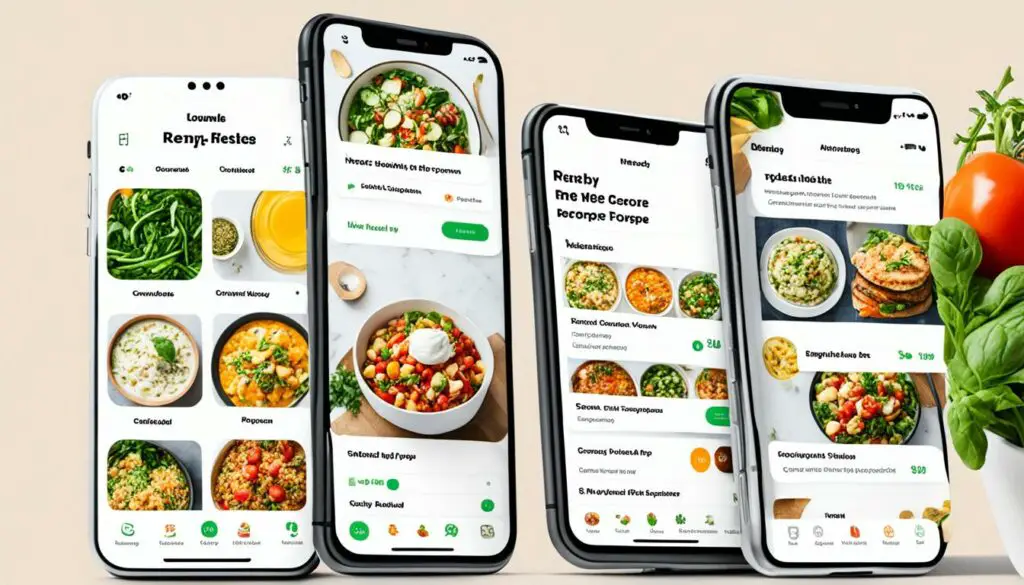
There is a wide range of recipe apps available, each catering to different user needs. Whether you’re looking to organize your recipes, plan meals, explore new cooking ideas, or track your ingredients, there’s an app for you. Let’s explore some popular types of recipe apps:
1. Recipe Database App
A recipe database app allows users to create personalized recipe lists and save recipes from the web. With features like search and filtering options, you can easily find the perfect recipe for any occasion. Whether you’re a professional chef or a home cook, a recipe database app is a convenient tool to have in your culinary arsenal.
2. Pantry App
A pantry app helps users track and manage their available ingredients, plan meals, and save money. With features like inventory management and recipe suggestions based on what’s in your pantry, you can reduce food waste and create delicious meals using what you already have.
3. Recipe Collection App
A recipe collection app is perfect for sharing cookbooks or accessing chef-level cooking advice. Whether you’re a novice or an experienced cook, these apps provide a wealth of culinary knowledge and inspiration.
4. Healthy Recipes App
For those following specific diets or looking to maintain a healthy lifestyle, a healthy recipes app is a great resource. These apps offer a wide range of nutritious recipes tailored to different dietary needs, often including calorie or ingredient calculators to help you stay on track.
5. Recipe Sharing App
Recipe sharing apps function like social networks for cooking enthusiasts. Users can share their favorite recipes, discover new ones, and engage with a community of like-minded individuals. It’s a great way to connect with fellow food lovers and explore culinary creations from around the world.
6. Meal Planner
A meal planner app helps users plan their meals in advance, making grocery shopping and meal preparation a breeze. With features like customizable meal plans and automated shopping lists, you can save time and money while developing healthier eating habits.
7. Kitchen Tool Apps
Kitchen tool apps integrate with smart kitchen gadgets and offer features like grocery list management, unit conversion, and cooking timers. These apps enhance your cooking experience and make it easier to follow recipes accurately.
8. Recipe Cost Calculator
For those mindful of their budget, a recipe cost calculator app can help estimate the cost of ingredients for a meal or recipe. This feature allows you to plan your grocery shopping and make informed decisions based on your budget.
As you can see, recipe apps offer a wide range of functionalities to suit various cooking needs. Whether you’re an aspiring chef or a busy home cook, there’s a recipe app out there that can simplify your culinary journey.
User Flow & Core Features of a Recipe App
Creating a successful recipe app requires understanding the user flow and incorporating essential features for each cooking phase. Users go through different stages when using a recipe app, from the spark phase where they’re curious about what to cook, to the preparation phase where they need clear instructions and suggestions for kitchen utensils, and finally the cooking phase where they check details like temperature and time. Optional phases include shopping for ingredients, planning meals, and social sharing of favorite recipes.
Here are the essential features that make a recipe app valuable to users:
- Inspiring visual content: High-quality images and videos to engage users and make the recipes more appealing.
- Step-by-step instructions: Clear and concise instructions presented in various formats, such as text, images, or videos, to cater to different learning preferences.
- Video recipes: Video demonstrations of the cooking process to help users follow along visually.
- Voice search: The ability to search for recipes using voice commands, providing hands-free access to the app.
- Recipe search and filtering: Robust search functionality with filters for specific ingredients, dietary requirements, or cuisines.
- Meal planning calendar: A feature that allows users to plan their meals ahead, create shopping lists, and save recipes for future reference.
- Social sharing capabilities: Integration with social media platforms to allow users to easily share their favorite recipes with friends and followers.
By including these features, a recipe app can enhance the user experience, provide valuable cooking resources, and stand out in the competitive market.
Monetization Strategies for Recipe Apps
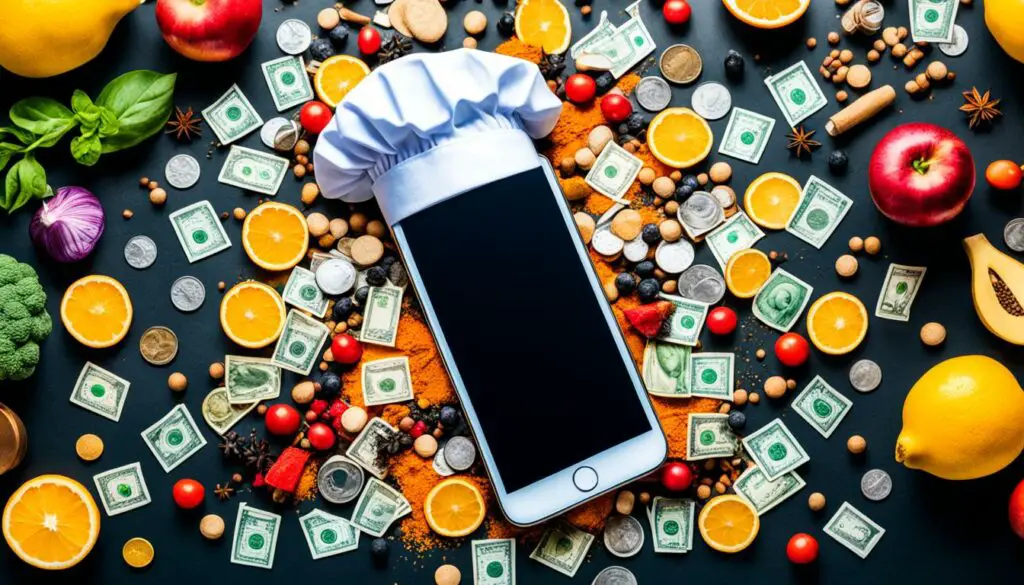
There are several effective monetization strategies for recipe apps that can help app owners generate revenue and maximize their earning potential. By implementing these strategies, you can turn your recipe app into a profitable venture. Here are some of the popular ways to monetize a recipe app:
User Subscription Models
User subscription models involve charging users for access to premium content or services. This can include features like ad-free recipes, exclusive vegan or diet-specific recipes, and recipe cost calculators. By offering valuable and specialized content, you can attract users who are willing to pay for an enhanced experience.
In-App Ads
In-app ads are a common way to monetize recipe apps. By displaying advertisements within the app, you can earn revenue from advertisers. This can be achieved by partnering with ad networks and displaying targeted ads to your users. However, it’s important to strike a balance between the ads and the user experience to avoid overwhelming your users.
Freemium Model
The freemium model offers basic features of the app for free while charging users for access to additional premium features or content. This can include advanced recipe search filters, personalized meal plans, or exclusive recipe collections. Providing a taste of what your app offers for free can attract a wider user base, while offering premium features allows you to generate revenue from users who are willing to pay for an enhanced experience.
Sponsorship
Sponsorship involves partnering with brands to promote their products or services within your recipe app. This can include featuring sponsored recipes using specific ingredients or partnering with kitchen utensil brands to showcase their products. By leveraging the reach and user base of your app, you can provide valuable exposure to brands while earning revenue through sponsored partnerships.
Selling Products or Services
Another monetization strategy is selling products or services related to cooking directly from your recipe app. This can include selling kitchen utensils, cookbooks, artisan goods, or even offering cooking lessons. By leveraging the trust and engagement of your app’s user base, you can tap into the market for cooking-related products and services and earn revenue through direct sales.
By combining these monetization strategies or focusing on the ones that align best with your target audience, you can create a recipe app that not only provides value to users but also generates a sustainable income for your business.
How to Build a Recipe App: Cost & Development Considerations
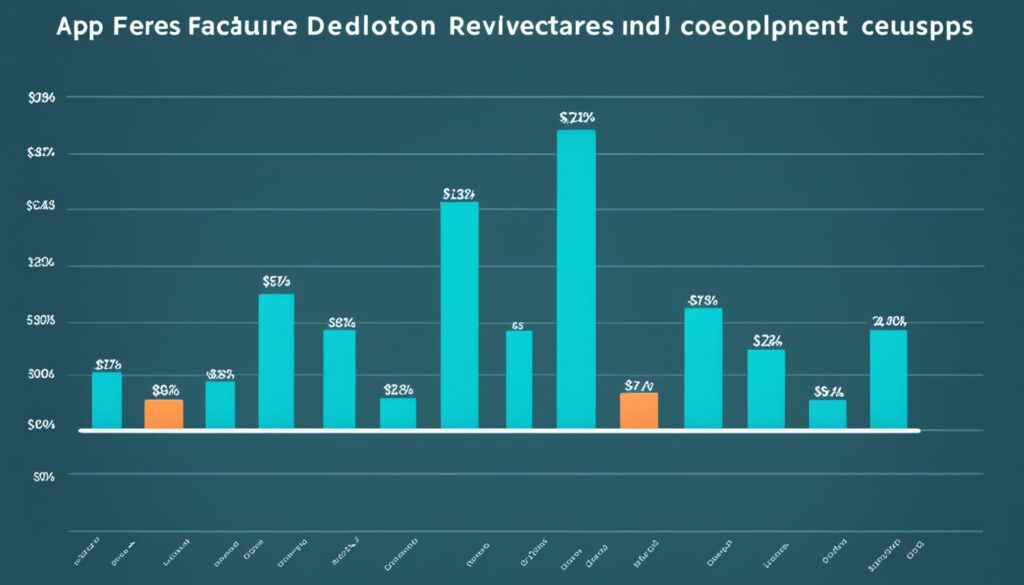
When embarking on the journey to build a recipe app, it’s important to consider the cost and development aspects. The total cost of developing a recipe app can range from $5,000 to $10,000 for a minimum viable product (MVP). However, several factors can influence the final expenses.
Factors Affecting Recipe App Development Cost:
- Technology Stack: The choice of technology stack for app development can impact the cost. Depending on the complexity and requirements of your app, different technologies may be more suitable, such as React Native, Flutter, or native app development.
- Design Considerations: The design intricacies and personalized elements of the app can influence the development cost. Creating a visually appealing and user-friendly interface may require additional resources and design expertise.
- Features and Functionality: The inclusion of specific features, such as search functionality, personalized recipe recommendations, social sharing capabilities, or integration with third-party APIs, can affect the development cost.
- App Size: The size and complexity of the app, including the number of screens and functionalities, can impact the overall cost. Larger apps with more features will generally require more development time and resources.
- Platform Choices: The choice between developing the app for iOS, Android, or both can impact the cost. iOS app development is usually more expensive than Android app development due to the need for additional testing and compatibility considerations.
Considering these factors, it is advisable to hire a dedicated development company to ensure the successful creation of your recipe app. Dedicated development companies, such as MadAppGang, have the necessary expertise and experience to guide you through the development process and deliver a high-quality application.
Image:
The Earning Potential of Food Blogging
Food blogging offers a unique opportunity to turn your passion for cooking into a profitable venture. With the right strategies and monetization methods, food bloggers can earn a substantial income. The earning potential of food bloggers depends on several factors, including audience size, partnerships, and revenue streams.
On average, food bloggers can make anywhere from $35,000 to $125,500 per year. However, successful food bloggers like Tiffy Cooks have been known to earn up to $55,000 per month before expenses. This demonstrates the significant income potential of food blogging when done right.
To monetize a food blog effectively, bloggers can employ a variety of methods. Display ads are a popular choice, allowing bloggers to generate revenue based on website traffic. Affiliate links provide another avenue for earning money by promoting products and earning commissions. Email marketing is another valuable tool for engaging readers and driving traffic to the blog.
Sponsored posts and brand deals are additional options for monetizing a food blog. By collaborating with brands, bloggers can feature their products or services, earning income in return. Selling ebooks or meal plans can also be a lucrative venture, offering exclusive content to readers and generating revenue.
Lastly, food bloggers can consider selling physical cookbooks or other related products. This allows bloggers to leverage their expertise and loyal following to create additional streams of income. By diversifying revenue streams, food bloggers can maximize their earning potential.
Table: Revenue Streams for Food Bloggers
| Revenue Stream | Description |
|---|---|
| Display Ads | Generating income based on website traffic through advertisements |
| Affiliate Links | Earning commissions by promoting products and services |
| Email Marketing | Engaging readers and driving traffic through targeted email campaigns |
| Sponsored Posts | Partnering with brands to feature their products or services |
| Brand Deals | Establishing ongoing partnerships and ambassadorships |
| Selling Ebooks or Meal Plans | Offering exclusive content for purchase |
| Selling Physical Cookbooks or Products | Using expertise and loyal following to create additional income streams |
12 Proven Ways to Monetize a Food Blog
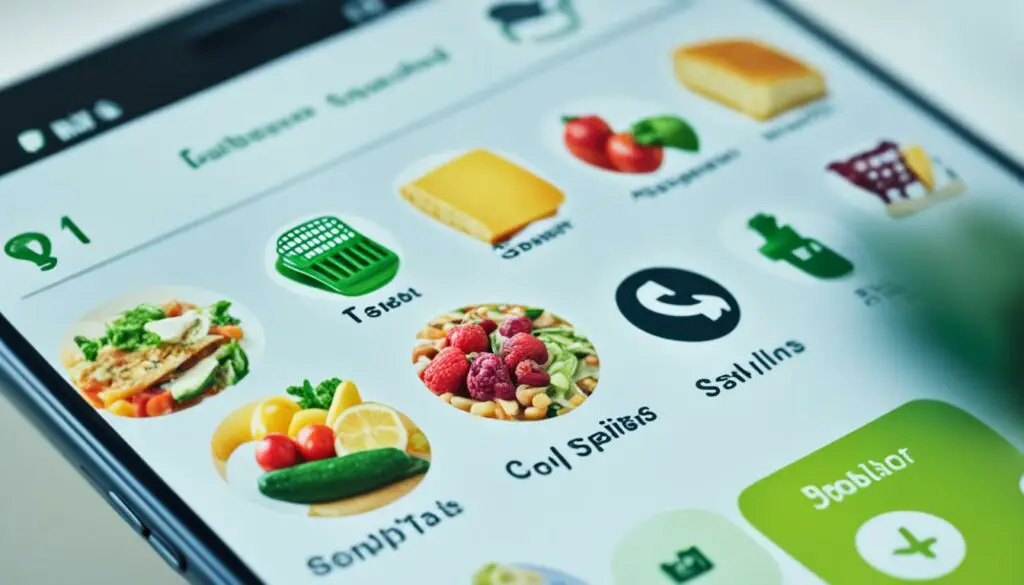
Monetizing a food blog offers various opportunities to generate income and turn your passion for food into a profitable venture. Here are twelve proven strategies to monetize your food blog:
- Display Ads: Capitalize on your website traffic by incorporating display ads, such as Google AdSense, to earn revenue from ad impressions and clicks.
- Affiliate Links: Promote products and services through affiliate links and earn commissions for every sale or action taken by your readers.
- Email Marketing: Engage your audience and drive traffic to your blog by implementing effective email marketing campaigns. Provide valuable content, exclusive recipes, and offers to keep your subscribers actively involved.
- Sponsored Posts: Collaborate with brands and feature their products or services in sponsored posts. This allows you to monetize your blog while providing valuable content to your readers.
- Brand Deals: Establish ongoing partnerships and ambassadorships with relevant brands in the food industry. These partnerships can range from sponsored content to long-term collaborations, boosting your blog’s monetization potential.
- Selling Ebooks or Meal Plans: Create and sell digital products such as ebooks or meal plans that cater to your audience’s interests and needs.
- Selling Physical Cookbooks or Products: Leverage your blog’s popularity to sell physical cookbooks, kitchen utensils, or other food-related products.
- Offering Memberships: Provide exclusive content, access to premium recipes, or additional perks through a membership model, generating recurring revenue.
- Creating Courses: Develop and sell online cooking courses to share your culinary expertise with your audience.
- Streaming Live Cooking Classes: Host live cooking classes or workshops, allowing your readers to participate for a fee.
- Selling Products Online: Set up an online store and sell food-related products, such as artisan ingredients or kitchen gadgets.
- Paid Subscriptions: Offer exclusive content, ad-free browsing, or other premium features through paid subscriptions to generate additional income.
“Monetizing your food blog requires a mix of strategies tailored to your audience and market niche. By diversifying your income streams, you can maximize your blog’s earning potential while providing value to your readers.” – Jane Smith, Successful Food Blogger
Implementing a combination of these monetization strategies can help you generate income and turn your food blog into a successful business. Experiment with different approaches and find the strategies that resonate best with your audience and align with your blog’s brand. Remember, creating valuable content and building strong partnerships with brands are key to achieving long-term success.
Growing Your Food Blog Audience
Driving traffic to your food blog is crucial for monetization purposes. By implementing effective strategies, you can attract more readers and increase the visibility of your blog. Here are some key tactics to enhance your food blog’s audience:
Using Pinterest for Food Blog Promotion
Pinterest is a powerful platform for promoting food blogs. With its visually appealing interface, users can save recipes and click through to your blog for the full recipe. By creating eye-catching pins and optimizing them with relevant keywords and descriptions, you can drive traffic from Pinterest to your food blog.
Enhancing Food Photography Skills
High-quality food photography plays a significant role in attracting readers to your blog. Captivating images can entice viewers and make them eager to read your recipes. Investing time in learning food photography techniques and styling can make a substantial difference in the aesthetics of your blog. Consider using natural lighting, experimenting with different angles, and showcasing appetizing dishes.
Optimizing Your Website for SEO
Search engine optimization (SEO) is essential for improving your food blog’s visibility in search engine rankings. By conducting keyword research and incorporating relevant keywords throughout your blog posts and meta tags, you can increase the likelihood of your blog appearing in search results. Pay attention to on-page optimization, including optimizing headings, meta titles, descriptions, and URL structures.
Developing Unique Recipes
Creating unique and innovative recipes sets your food blog apart from the competition. Offering your readers something fresh and exciting encourages them to visit your blog regularly and share your content with others. Experiment with different flavor combinations, explore international cuisines, or put a creative twist on classic recipes.
Building a strong audience for your food blog requires a combination of effective promotion, visually appealing content, and search engine optimization. By implementing these strategies, you can drive traffic, engage readers, and increase the success of your food blog.
Leveraging Social Media & Email Marketing for Food Blogs
Social media platforms such as Instagram and TikTok provide an excellent opportunity to promote your food blog and engage with your audience. By leveraging the power of visually appealing photos and videos, you can attract followers and drive traffic to your blog.
In addition to social media, building an email list is crucial for effective email marketing and establishing direct communication with your readers. By collecting email addresses from your blog visitors, you can stay connected with them, provide updates, and share valuable content directly to their inbox.
To make the most of your email list, consider creating engaging newsletters that highlight new recipes, special content, or exclusive offers. By offering valuable and unique content through email, you can build reader loyalty and keep them engaged with your blog.
One way to further monetize your food blog is by offering paid subscriptions. Platforms like Substack allow you to provide exclusive content, tutorials, or meal plans to subscribers for a fee. This not only generates additional revenue but also offers your most dedicated readers an opportunity to access premium content.
Create a Strong Social Media Presence
Social media platforms play a crucial role in promoting your food blog and attracting a wider audience. Here are some key steps to create a strong social media presence:
- Choose the right platforms: Focus on popular platforms like Instagram and TikTok that have a strong food and recipe community.
- Share high-quality visual content: Use captivating photos and videos to showcase your recipes and create visually appealing content.
- Engage with your audience: Respond to comments, answer questions, and show appreciation for your followers.
- Collaborate with influencers: Partner with popular food influencers to reach a broader audience and gain credibility.
Building an Effective Email List
An email list is a powerful tool for connecting with your readers on a more personal level. Here are some tips for building an effective email list:
- Create opt-in opportunities: Provide opt-in forms on your blog, offering freebies or exclusive content in exchange for email addresses.
- Segment your audience: Group your subscribers based on preferences or interests to send more targeted and relevant content.
- Offer incentives: Provide exclusive discounts, early access to recipes, or special promotions as incentives for signing up.
- Send regular newsletters: Keep your subscribers engaged by sending regular newsletters with valuable content and updates.
Monetizing Your Email List with Engaging Newsletters
Newsletters are a great way to nurture your relationship with your email subscribers and monetize your blog. Here are some tips for creating engaging newsletters:
Quote: “Your newsletters should provide value and offer your subscribers a reason to open and read them.” – Jane Doe, Food Blog Expert
- Create compelling subject lines: Use enticing subject lines to increase open rates and encourage readers to click through.
- Include exclusive content: Offer exclusive recipes, cooking tips, or behind-the-scenes insights that are not available on your blog.
- Promote your paid subscriptions: Use newsletters to showcase the benefits of your paid subscription model and encourage readers to upgrade.
- Personalize your emails: Address subscribers by their names and tailor the content based on their preferences or previous interactions.
Comparison of Social Media Platforms
| Platform | Advantages | Target Audience | Engagement Features |
|---|---|---|---|
| – Visual-focused platform – Large food and recipe community – Discoverability through hashtags |
Food enthusiasts, aspiring cooks, bloggers | Likes, comments, private messaging, Stories, Reels | |
| TikTok | – Viral potential – Entertaining and quick recipe videos – Trending challenges and hashtags |
Youthful audience, trend seekers | Likes, comments, shares, duets, stitches |
By leveraging social media platforms, building an email list, creating engaging newsletters, and offering paid subscriptions, you can enhance the monetization and growth of your food blog. Engaging with your audience through social media and email marketing not only helps promote your blog but also establishes deeper connections with your readers, leading to increased loyalty and revenue opportunities.
Conclusion
Monetizing recipe apps and food blogs presents tremendous opportunities for individuals passionate about cooking and sharing their culinary expertise. By implementing effective strategies such as display ads, affiliate links, sponsored posts, and selling products or services, app owners and bloggers can unlock the revenue-generating potential of their platforms.
Developing a successful recipe app requires careful consideration of the user flow and the incorporation of essential features for each cooking phase. By providing inspiring visual content, step-by-step instructions, video recipes, and social sharing capabilities, app owners can enhance the user experience and create a valuable tool for cooking enthusiasts.
Similarly, food bloggers should prioritize creating valuable and engaging content while growing their audience and establishing partnerships with brands. Through various monetization methods such as display ads, sponsored posts, selling ebooks or physical products, and leveraging social media and email marketing, food bloggers can transform their passion into a profitable venture.
With dedication, strategic planning, and a focus on delivering exceptional content and user experiences, both recipe apps and food blogs have the potential to thrive in today’s digital landscape and become lucrative businesses for those with a love for cooking and sharing recipes.
FAQ
How can I monetize a recipe app?
There are various ways to monetize a recipe app, including user subscriptions, in-app ads, freemium models, sponsorship, and selling products or services related to cooking.
What are the different types of recipe apps?
Recipe apps come in various types, including recipe database apps, pantry apps, recipe collection apps, healthy recipes apps, recipe sharing apps, meal planners, kitchen tool apps, and recipe cost calculators.
What are the essential features for a recipe app?
Essential features for a recipe app include inspiring visual content, step-by-step instructions, video recipes, voice search, recipe search and filtering, meal planning calendar, and social sharing capabilities.
How much does it cost to build a recipe app?
The cost of building a recipe app can range from $5,000 to $10,000 for a minimum viable product (MVP), depending on factors like technology stack, design complexities, features, app size, and platform choices.
How much do food bloggers earn?
The income potential for food bloggers varies, with average annual incomes ranging from $35,000 to $125,500. Successful food bloggers can earn up to $55,000 per month before expenses.
What are the monetization strategies for food blogs?
Food blogs can be monetized through display ads, affiliate links, email marketing, sponsored posts, brand deals, selling ebooks or meal plans, and selling physical cookbooks or products.
How can I drive traffic to my food blog?
You can drive traffic to your food blog by utilizing platforms like Pinterest, improving your food photography skills, optimizing your website for SEO, and creating unique and high-quality recipes.
You can leverage social media platforms like Instagram and TikTok to promote your food blog, build an email list for email marketing, and offer paid subscriptions for exclusive content or meal plans.
How can I monetize my food blog and recipe app?
You can monetize your food blog and recipe app by implementing effective strategies such as display ads, affiliate links, sponsored posts, and selling products or services related to cooking.
What is the earning potential of recipe apps?
Recipe apps have earning potential through various monetization methods, potentially generating significant revenue depending on factors like user subscriptions, in-app ads, and selling premium content or services.

